Today’s Current Affairs: 15th April 2025 for UPSC IAS exams, State PSC exams, SSC CGL, State SSC, RRB, Railways, Banking Exam & IBPS, etc
Table of Contents
Hudson River : Helicopter Crash
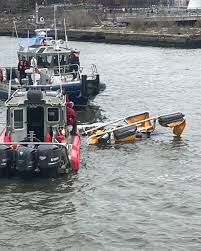
Aviation experts have suggested that ‘mast bumping’ could be the reason behind the tragic helicopter crash into Manhattan’s Hudson River recently.
- Mast bumping is a helicopter issue where the rotor hub strikes the mast, often in two-bladed, teetering rotor systems like Bell models.
- It happens during low-G maneuvers or abrupt control inputs, disrupting rotor balance.
- This can cause the hub to hit the mast, leading to loss of control or rotor separation, risking a crash.
- Hudson River is a river in New York State, United States.
- It flows almost entirely within the New York state, the exception being its final segment, where it forms the boundary between New York and New Jersey for 21 miles (34 km).
- It is named after English Sea Explorer, Henry Hudson.
- It originates in several small postglacial lakes in the Adirondack Mountains near Mount Marcy (1,629 metres), the highest point in New York, and flows about 315 miles (507 km) through the eastern part of the state.
- Lake Tear of the Clouds is regarded as the source of its main headstream, the Opalescent River.
- The water from the Hudson River flows into the Upper New York Bay.
- It drains an area of 34,628 sq.km.
Pakke Tiger Reserve : Camera traps
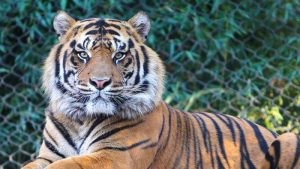
Camera traps installed at the Pakke Wildlife Sanctuary and Tiger Reserve in Arunachal Pradesh detected nine big cats at the park.
- It is located in the East Kameng District of Arunachal Pradesh.
- It is surrounded by the Tenga Reserve Forest to the north, Doimara Reserve Forest on the west, Nameri National Park and Tiger Reserve (Assam) on the south, and some agricultural land as well as Papum Reserve Forest on the east.
- It lies within the Eastern Himalayas foothills and is surrounded by the Kameng River in the west and north, and the Pakke River across the east.
- It covers an area of 862 sq.km.
- It has a subtropical climate with cold winters.
- The Nyishi tribe inhibits the area and plays a great role in its conservation.
- This Tiger Reserve has also won the India Biodiversity Award 2016 in the category of ‘Conservation of threatened species’ for its Hornbill Nest Adoption Programme.
Kyasanur Forest Disease: Surging
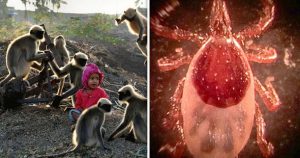
Kyasanur Forest Disease (KFD), or ” is currently surging in Karnataka’s Shivamogga and Chikkamagaluru districts recently.
- KFD, also referred to as Monkey Fever, is a tick-borne viral haemorrhagic disease, which can be fatal to humans and other primates.
- It is mostly found in southern India. The disease was first reported from the Kyasanur Forest of Karnataka in 1957, hence, it is known as KFD.
- The causal agent, Kyasanur Forest Disease Virus (family Flaviviridae, genus Flavivirus), is a member of the tick-borne encephalitis (TBE) complex.
- The epidemic period usually begins in October or November and peaks from January to April, then declines by May and June.
- Hard ticks (Hemaphysalis spinigera) spread the KFD virus to people and to animals, like monkeys and rodents.
- No person-to-person transmission has been established yet.
- Most people with KFD have a sudden onset of chills, fever, and headache.
- Severe muscle pain, vomiting, gastrointestinal symptoms, and bleeding can follow 3 or 4 days after symptoms begin.
- Most patients recover one to two weeks after symptoms begin.
- About 10 to 20% of patients experience a second wave of symptoms, including severe headache, mental disturbances, tremors, and vision problems.
- Between 5 and 10% of people who are known to be affected by KFD die.
- There is no cure for KFD.
- Supportive care is crucial, including fluid balance, providing oxygen, managing blood pressure, and treating additional infections.
- A vaccine for KFD is available and recommended in the parts of India where KFD is found.
- The existing vaccine is a formalin-inactivated whole virus vaccine, but it requires booster doses and has shown limited efficacy in some cases.
Mir Alam Tank:
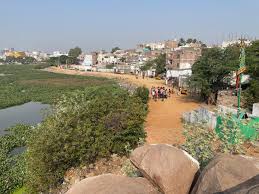
The Telangana state government will build a bridge spanning 2.5 km across the Mir Alam Tank in Hyderabad and develop three island zones there in the style of Gardens by the Bay in Singapore.
- It is a freshwater tank in Hyderabad, Telangana, located in the southern part of the Musi river.
- It covers an area of approximately 260 acres and has a capacity of 21 million cubic meters of water.
- The tank is fed by several streams and springs that flow down from the nearby hills.
- It was the primary source of drinking water for Hyderabad before the Osman Sagar and Himayat Sagar reservoirs were built by the last Nizam of Hyderabad in 1913-25.
- The tank was named after Mir Alam Bahadur, the Prime Minister of Hyderabad during Asaf Jah III’s reign, the third Nizam of Hyderabad state.
- Mir Alam Bahadur is believed to have laid the foundation for the tank in 1804, which was then completed in a period of two years by
- It was built by a French engineering company comprising 21 semicircular arches for a total area of approximately one mile.
- It was reportedly planned by Michel Joachim Marie Raymond, the Frenchman to whom Hyderabad’s Raymond Tomb has been dedicated.
Electroreception:
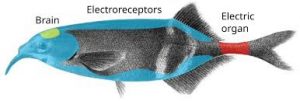
Researchers at the University of California, Santa Barbara have discovered that fruit fly larvae possess the ability to detect and respond to electric fields, a sensory ability known as electroreception.
- Electroreception is the biological ability to detect weak electrostatic fields in the environment. It allows animals to sense electric fields generated by other living organisms or environmental factors.
- This ability is primarily found in certain vertebrate species, especially aquatic animals like sharks and electric fish, but is now also observed in invertebrates like fruit fly larvae.
- Electroreceptor organs were first discovered in the 1960s through physiological studies of weakly electric fish by Theodore H. Bullock, an American neuroscientist, and French scientists Thomas Szabo and Alfred Fessard.
- In some species, electroreception is also used for social communication, indicating its evolutionary importance beyond navigation or hunting.
- The researchers found that only a small cluster of sensory neurons located on either side of the larva’s head were involved in this electroreceptive behavior.
- Upon closer analysis under a microscope, it was confirmed that a single neuron in this head cluster was directly responsible for detecting the electric field.
- The neuron exhibited directional sensitivity—it was inhibited when the negative electrode was in front of the larva’s head and activated when the electrode was behind, which triggered the larva to reorient and move
- By eliminating other possible stimuli (confounding factors), the scientists confirmed that the larval response was specifically due to the electric field itself, not other environmental cues.
- This makes fruit fly larvae one of the few organisms, along with sharks, bees, and the platypus, known to exhibit this rare sensory ability.
- In controlled experiments, larvae immersed in an electric field were observed to reorient their movement and navigate towards the negative electrode, indicating that they could detect and respond to the direction and strength of the electric field.
Mk-II(A) Laser Directed Energy Weapon :
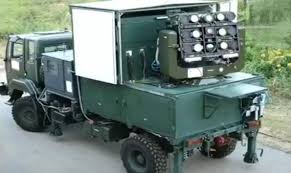
India recently conducted a successful trial of the Mk-II(A) Laser- Directed Energy Weapon (DEW) that can disable fixed-wing and swarm drones, becoming one of the only four nations to have developed the technology.
- It is a 30-kilowatt laser-based weapon system designed to take down helicopters, swarm drones and radars.
- The Defence Research and Development Organisation’s (DRDO) Centre for High Energy Systems and Sciences (CHESS), Hyderabad, developed this system along with several academic institutions and Indian industries.
- It is one of the most potent counter-drone systems in the world due to its lightning speed of engagement, precision, and lethal action within a few seconds.
- The laser system engages fixed-wing drones from a long range and can thwart multiple drone attacks at a time, destroying surveillance sensors and antennae.
- Once a target is identified by a radar or by its inbuilt Electro Optic (EO) system, it uses an intense beam of powerful light (laser beam) to cut through the target, causing structural failures or even more lethal damage.
- The development of this laser weapon can lower the risk of collateral damage and reduce reliance on expensive ammunition during conflict.
- With this, India has joined a list of selected countries, such as the US, China, and Russia, with such capabilities.
BatEchoMon:

India’s First Automated Bat Monitoring and Detection System was created by the Indian Institute for Human Settlements (IIHS), Bengaluru.
- BatEchoMon stands for “Bat Echolocation Monitoring”. It is India’s first automated, real-time bat monitoring and detection system.
- The system was developed by bat biologist Kadambari Deshpande and engineer Vedant Barje under the guidance of Jagdish Krishnaswamy.
- It was designed as part of the Long-Term Urban Ecological Observatory at the School of Environment and Sustainability, Indian Institute for Human Settlements (IIHS), Bengaluru.
- BatEchoMon autonomously detects, records, analyses, and classifies bat echolocation calls in real-time something that previously took researchers months to do manually.
- It includes:
- An ultrasonic microphone using a modified AudioMoth
- A Raspberry Pi microprocessor to process and classify calls.
- A solar-powered battery for power and a Wi-Fi unit for data transmission.
- The device activates automatically at sunset and continuously records audio through the night.
- It uses a Convolutional Neural Network (CNN) algorithm to distinguish bat calls from other sounds and to classify them based on peak frequency and call structure.
ESA’s Biomass Mission:

The European Space Agency (ESA) is preparing to launch a landmark space mission called the Biomass Mission, which will provide the first-ever comprehensive global measurements of forest biomass.
- The European Space Agency (ESA) is launching a pioneering mission called the Biomass Mission, scheduled for April 29, 2025.
- The satellite will be launched aboard a Vega C rocket from Korou Spaceport in French Guiana.
- It will be placed in a sun-synchronous orbit at an altitude of approximately 666 km, ensuring the satellite observes the Earth under consistent lighting conditions.
- The Biomass Mission aims to generate the first-ever global measurements of forest biomass, providing data that is currently severely lacking at a planetary scale.
- The mission seeks to map the world’s forests and understand how they are changing over time, contributing to the study of the global carbon cycle.
- Forests are a vital component of the carbon cycle, acting as carbon sinks.
- They currently store 861 gigatonnes of carbon in vegetation and soils and absorb around 16 billion metric tonnes of CO₂ annually.
- By tracking changes in forest carbon content, the mission will improve our understanding of carbon emissions, deforestation, and climate change.
- The mission responds to urgent concerns: in 2023 alone, the planet lost 3.7 million hectares of tropical forests—equivalent to losing 10 football fields of forest per minute, contributing to about 6% of global CO₂ emissions.
Signet Ring Cell Carcinoma:
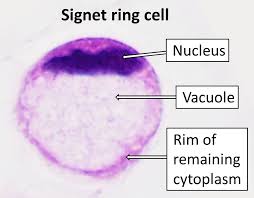
A team of Indian scientists has developed novel analytical methods to study and potentially treat Rare Colorectal Cancer (SRCC) more effectively.
- Signet Ring Cell Carcinoma (SRCC) is a rare and aggressive subtype of colorectal cancer (CRC) that originates in the colon or rectum.
- It is named for the signet ring-like appearance of its cells under a microscope, caused by mucus pushing the nucleus to one side.
- SRCC is known for its rapid spread, resistance to conventional therapies, and late-stage diagnosis, making it one of the deadliest colon cancer variants.
- The researchers developed Patient-Derived Organoids (PDOs) and Patient-Derived Xenografts (PDXs):
- PDOs are miniature 3D tumour models grown from human cancer tissues in lab dishes.
- PDXs involve implanting human tumour cells into mice, enabling the tumour to grow in a living system.
- These lab-grown models closely mimic the molecular behaviour of actual human SRCC tumours.
- This method forms one of the first living biobanks of SRCC models, enabling researchers to study the disease more precisely and test treatments in a controlled environment.
- A major difficulty in treating SRCC is its tendency to spread to the peritoneum, the lining of the abdominal cavity, which worsens the prognosis and reduces treatment effectiveness.
- While SRCC makes up only 1% of all CRC cases globally, in India, it affects a disproportionately larger number of patients — nearly 10 times more, often in younger individuals.
Africa India Key Maritime Engagement : Began

The inaugural edition of the Africa India Key Maritime Engagement (AIKEYME), a large-scale multilateral maritime exercise, began in Dar-es-Salaam, Tanzania.
- AIKEYME is a large-scale multilateral maritime exercise between India and African nations, inaugurated in April 2025 at Dar-es-Salaam, Tanzania.
- India and Tanzania jointly host the exercise, reflecting their shared strategic interests in the Indian Ocean Region (IOR).
11 nations are participating: India, Tanzania, Comoros, Djibouti, Eritrea, Kenya, Madagascar, Mauritius, Mozambique, Seychelles, and South Africa. - The primary aim is to develop cooperative solutions to regional maritime challenges and to enhance naval interoperability and coordination between partner navies.
- The exercise aligns with India’s SAGAR (Security and Growth for All in the Region) vision and MAHASAGAR (Mutual and Holistic Advancement for Security and Growth Across Regions) initiative, which the PM unveiled in March 2025.
- INS Chennai (Destroyer), INS Kesari (Landing Ship Tank), and INS Sunayna are deployed as part of the engagement.
- INS Sunayna is sailing under the Indian Ocean Ship (IOS) SAGAR mission, involving joint surveillance and goodwill port calls in Tanzania, Mozambique, Mauritius, Seychelles, and the Maldives.
- Conducted over six days (April 13–18, 2025), divided into harbour and sea phases.
Ammonia Gas Leakage:
An ammonia gas leak at an ice factory in Ratlam, Madhya Pradesh, triggered panic among residents. Such chemical incidents highlight the recurring challenges of industrial safety and disaster preparedness in India. Ammonia (NH₃) is a colorless gas with a sharp smell, widely used in industry and naturally found in the environment and human body. It is produced by the Haber-Bosch process (N₂ + 3H₂ → 2NH₃) under high temperature and pressure in the presence of a catalyst: Its concentrated form is corrosive and can cause burns or explode under high heat. It is stored as a compressed liquid. It is highly water-soluble and forms ammonium hydroxide in contact with water. It has 9 times the energy density of Li-ion batteries and 3 times that of compressed hydrogen, making it a promising carbon-free energy carrier.
Siachen Day:
Siachen Day (13th April) commemorates Operation Meghdoot, which marked India’s successful military control of the Siachen Glacier in 1984. Siachen is located at around 20,000 feet in the Karakoram Range, is the longest glacier in this range and highest militarized zone globally. The Saltoro Ridge, part of the Karakoram, lies southwest of the Siachen Glacier. Siachen plays a crucial role in controlling routes from Gilgit-Baltistan to Leh and the Karakoram Pass.
What are Traditional Seeds?
Traditional seed varieties are declining due to market preferences for hybrid crops, threatening biodiversity and climate resilience.Traditional seeds, also called indigenous, heirloom, or desi seeds, are native crop varieties that have been naturally cultivated, saved, and exchanged by farmers over generations. Unlike hybrid or genetically modified (GM) seeds, they are open-pollinated, meaning they can be replanted without losing their genetic traits.
STELLAR Model:
The Central Electricity Authority (CEA) launched STELLAR, India’s first fully indigenous resource adequacy model, aimed at optimizing electricity generation, transmission, and storage planning across states.STELLAR (State of the art Totally indigenously developed Resource adequacy model) is a next-gen software tool for integrated planning of power generation, transmission, storage, and demand response. Developed by Central Electricity Authority (CEA) in collaboration with The Lantau Group (TLG) and supported by the Asian Development Bank (ADB).Aim is to help states and power distribution companies (Discoms) prepare annual dynamic resource adequacy plans, ensuring uninterrupted power supply and system-wide efficiency.
Telangana Becomes First State to Implement SC Sub-Categorisation:
The Telangana government has become the first in India to implement Scheduled Castes (SC) sub-categorisation, following the Supreme Court’s approval. On April 14, 2025—coinciding with Dr. B.R. Ambedkar’s birth anniversary—the state issued a Government Order (GO) enforcing the Telangana Scheduled Castes (Rationalization of Reservations) Act, 2025. The move aims to rationalize the existing 15% SC reservation by dividing 59 SC sub-castes into three groups based on inter-se backwardness, thus ensuring more equitable distribution of benefits.
Milkfed Launches ‘Veera’ Mascot for Verka to Boost Nationwide Presence:
Milkfed Punjab, one of India’s largest state dairy cooperatives, has unveiled a new mascot named ‘Veera’ for its flagship dairy brand Verka. The initiative aims to enhance Verka’s recognition and sales across India and beyond, mirroring the enduring success of iconic mascots like the Amul Girl. Veera, a young smiling Sikh boy with folded hands, symbolizes Punjab’s warmth, tradition, and hospitality. This launch coincided with the foundation stone laying of a ₹135 crore dairy expansion project in Amritsar, further reflecting the brand’s vision of modernizing its operations and expanding its footprint.
India calls Second Overall in First ISSF World Cup 2025:
India showcased a powerful start to the international shooting season, securing the second position overall in the first ISSF World Cup 2025 for rifle, pistol, and shotgun disciplines. The tournament, held ahead of the upcoming Paris Olympics, reflected India’s rising shooting talent, blending youth and experience. Despite narrowly missing out on a medal in the final event, the Indian contingent walked away with 8 medals, demonstrating depth, consistency, and promise for the future.
P. Sivakami Honoured with Verchol Dalit Literary Award 2025:
Acclaimed writer, retired IAS officer, and social activist P. Sivakami was awarded the Verchol Dalit Literary Award by the Neelam Cultural Centre, founded by filmmaker Pa. Ranjith. The award ceremony, held in Chennai, also included a cash prize of ₹1 lakh. The event was not only a celebration of literary excellence but also a powerful reaffirmation of Dalit identity, intellectual agency, and the space for social transformation through literature
Carlos Alcaraz Wins 2025 Monte Carlo Masters:
Spanish tennis star Carlos Alcaraz claimed the Rolex Monte Carlo Masters 2025 title with a remarkable comeback against Italy’s Lorenzo Musetti. Despite dropping the first set, Alcaraz dominated the remaining two sets, taking advantage of Musetti’s leg injury in the decider. The win marks his sixth ATP Masters 1000 title and solidifies his position among the sport’s elite as he heads toward his 22nd birthday next month.
Mario Vargas Llosa A Noble Award Winner Passed Away:
Mario Vargas Llosa, the renowned Peruvian novelist, essayist, and journalist, passed away on April 14, 2025, at the age of 89. A towering figure in Latin American literature, Vargas Llosa was awarded the Nobel Prize in Literature in 2010 for his profound exploration of the structures of power and the individual’s struggle against it. Throughout his career, he wrote over 30 novels and numerous essays, which were translated into many languages and have left a lasting impact on global literature.




